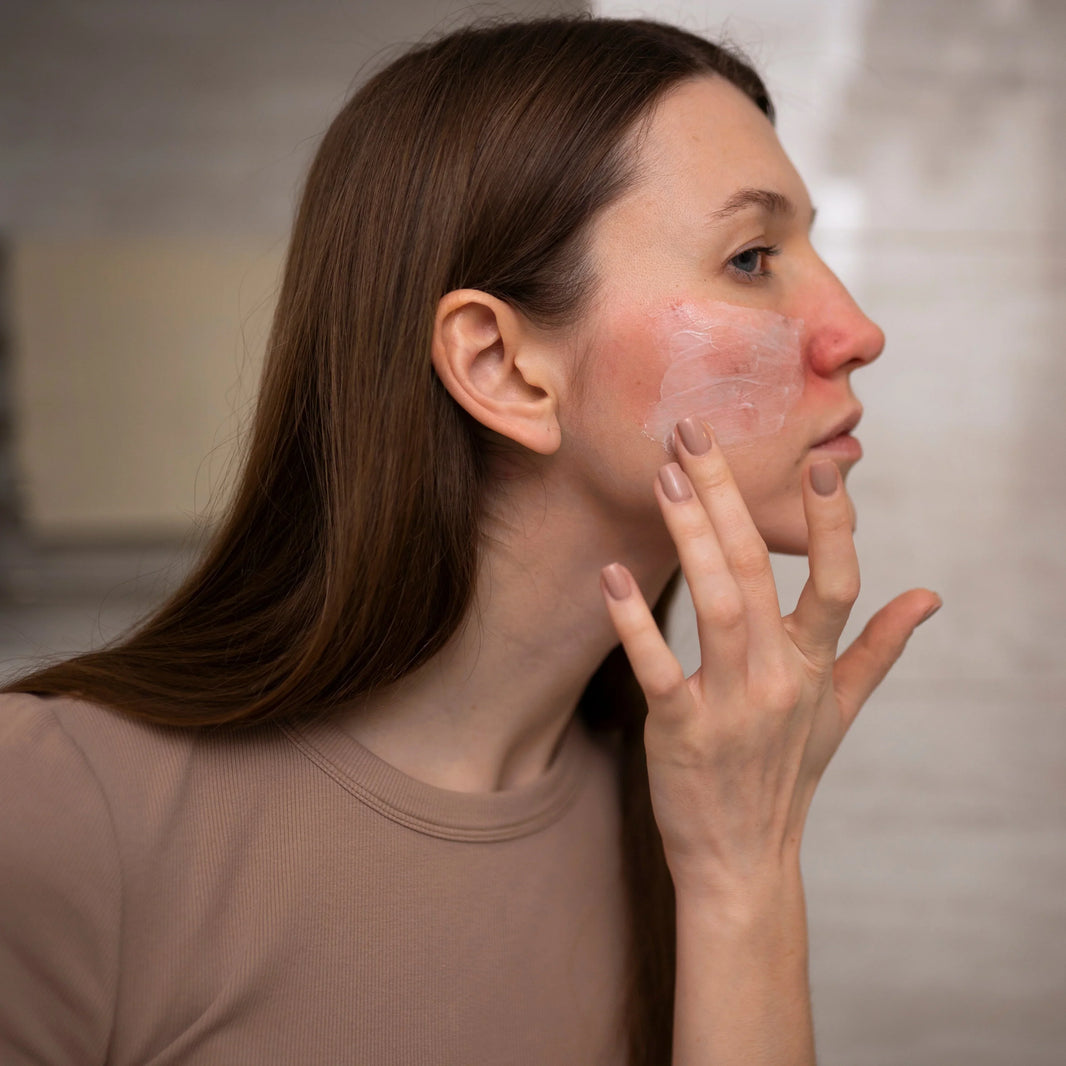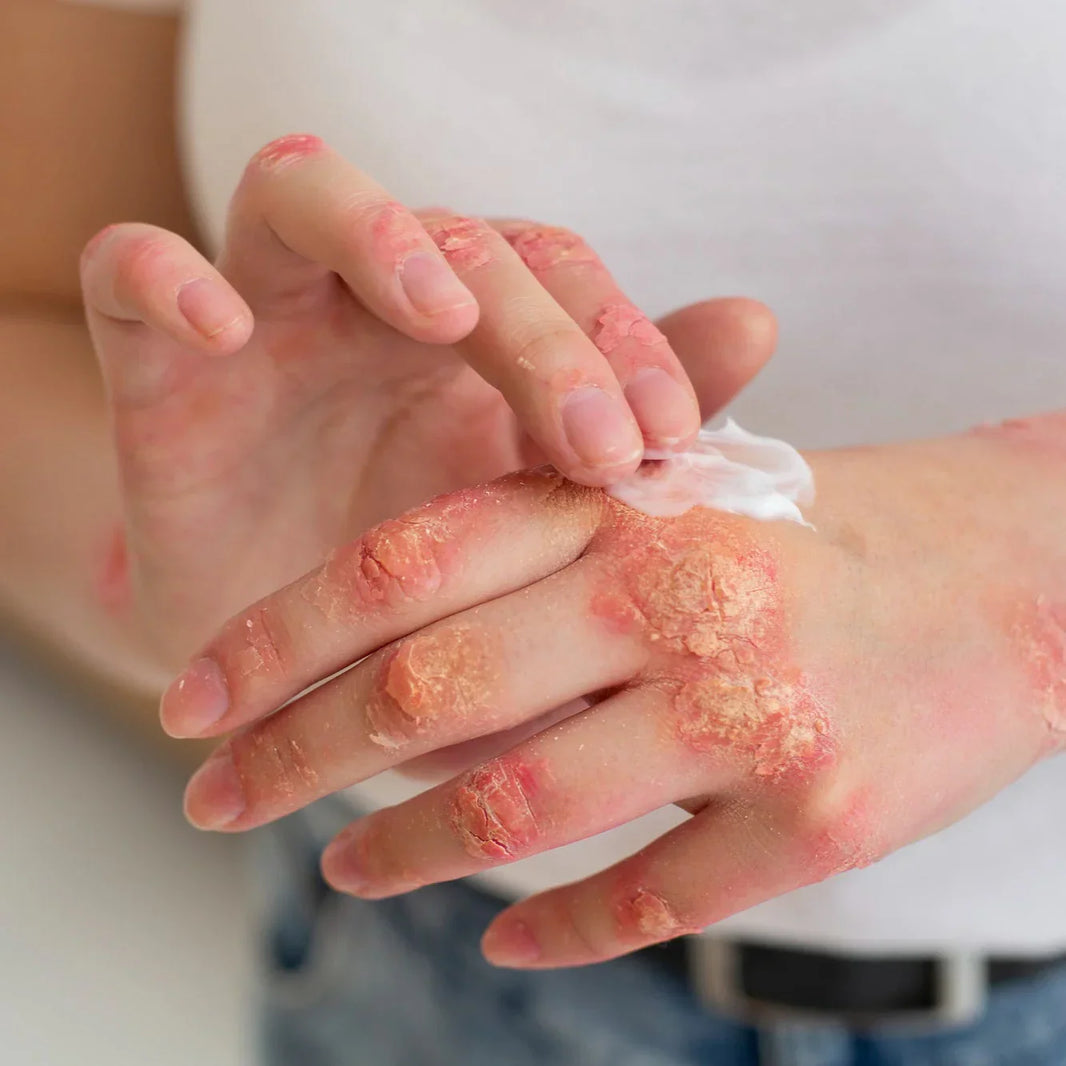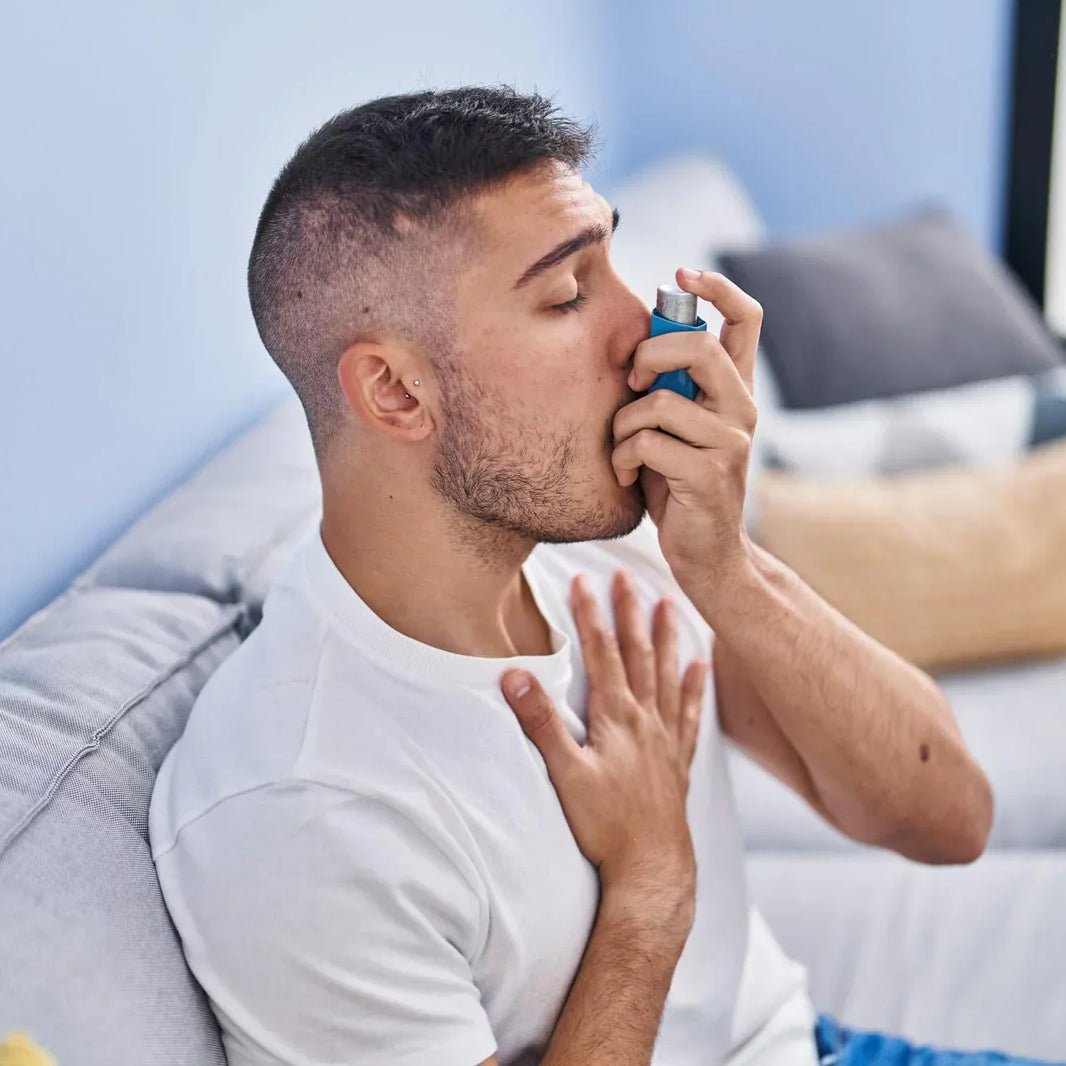Mold illness, also known as dampness and mold hypersensitivity syndrome (DMHS), represents a significant but often overlooked public health challenge resulting from exposure to water-damaged environments and the microbiota that thrive in such conditions. This comprehensive illness affects multiple body systems through complex mechanisms involving inflammation, immune dysregulation, oxidative stress, and direct toxic effects from fungal byproducts. The scientific understanding of mold-related illness has advanced considerably in recent years, though controversy remains regarding some aspects of diagnosis and treatment. Research consistently demonstrates that mold exposure can trigger both acute and chronic health effects, with some individuals developing persistent multisystem illness that continues even after removal from the exposure source. This report examines the current scientific understanding of mold illness mechanisms, biological targets, and evidence-based treatment approaches while differentiating between well-established interventions and those lacking substantial supportive evidence.
Understanding Mold Illness and Its Classification
Mold illness emerges from exposure to water-damaged buildings (WDBs) containing not only mold spores and hyphal fragments but also mycotoxins, bacteria, bacterial endotoxins, and other inflammatory cell wall components1. This complex mixture of biological agents creates a multifaceted exposure that challenges human health through various pathophysiological mechanisms. The resulting illness manifests through a combination of inflammation, oxidative stress, toxicity, infection, allergic responses, and direct irritant effects of exposure1. Despite growing evidence linking mold exposure to significant health problems, recognition of the condition has faced political and institutional challenges in some regions, with Finland notably downplaying the illness and misinterpreting it as primarily psychological rather than biological in nature2.
Terminology and Definitions
The terminology surrounding mold-related health problems has evolved over time, with several overlapping terms used to describe the condition. "Sick building syndrome" (SBS) traditionally referred to symptoms experienced while in a particular building that resolve upon leaving, but this term has been criticized as imprecise since many environmental hazards beyond mold can cause such reactions12. More specific terms include "dampness and mold hypersensitivity syndrome" (DMHS), which describes the chronic, potentially irreversible condition that can develop from persistent exposure to water-damaged environments12. While SBS may be reversible with prompt intervention, continued or repeated exposure can lead to the more serious DMHS, characterized by persistent systemic inflammation and immune dysregulation12. Residential mold exposure represents an underrecognized public health challenge with substantial health and economic implications, as approximately 21% of current asthma cases in the United States are attributable to damp environments14.
From Acute to Chronic: The Progression of Mold-Related Illness
Mold-related illness often begins with acute symptoms upon exposure that may initially resolve when leaving the contaminated environment. However, research shows that chronic or repeated exposure can lead to persistent health problems that continue even after removal from the source3. Finnish research has documented severe sequelae in two cohorts exposed to mold-infested environments – one a family living in a contaminated home and another consisting of teachers and students from a mold-infested school building3. The family cohort developed a range of mucosal irritation, neurological, skin, and allergic symptoms, eventually progressing to multiple chemical sensitivity syndrome3. Even more concerning, the school cohort showed a markedly elevated prevalence of autoimmune conditions and malignancies, suggesting long-term serious health consequences from chronic mold exposure3. These findings challenge the notion that mold-related illness is merely a transient condition and support the understanding that it can exist in multiple facets with potentially serious long-term health implications3.
Mechanisms and Pathophysiological Pathways
Understanding the mechanisms through which mold and its byproducts affect human health is crucial for developing effective diagnostic and treatment approaches. Multiple pathophysiological pathways have been identified that explain how mold exposure leads to widespread symptoms affecting virtually every body system.
Mycotoxins and Their Toxic Effects
Mycotoxins, the toxic secondary metabolites produced by certain mold species, play a central role in mold illness. Macrocyclic trichothecene mycotoxins, produced by one chemotype of Stachybotrys chartarum (the notorious "black mold"), function as potent translational inhibitors and stress kinase activators that appear to be critical underlying causes for many adverse effects7. These toxins form covalent protein adducts both in vitro and in vivo and have been demonstrated to cause neurotoxicity and inflammation in the nose and brain of experimental animals7. Another significant finding involves "trilongins," a combined set of toxins produced by Trichoderma longibrachiatum that were previously unidentified for this species4. Researchers determined that two classes of these toxins act synergistically to exacerbate both the potency and duration of toxic effects, which represents an important insight into how relatively low concentrations of multiple toxins might produce significant biological effects4. Each mold species produces a unique set of toxins depending on species, strain, and growing conditions, creating complex exposure scenarios that complicate both research and clinical management4.
Immune System Dysregulation and Inflammation
A cornerstone feature of mold-related illness is the dysregulation of the immune system, which manifests as both hypersensitivity reactions and impaired immunity. DMHS involves acquired dysregulation of the immune system in the direction of hypersensitivities (types I–IV) along with simultaneous deprivation of immunity that manifests as increased susceptibility to infections12. This combination of heightened reactivity to certain stimuli alongside reduced capacity to fight infections creates a particularly challenging clinical picture. Evidence increasingly suggests links between DMHS and autoimmunity, with studies reporting autoantibodies towards myelin basic protein, myelin-associated glycoprotein, ganglioside GM1, smooth muscle cells, and antinuclear autoantibodies in mold-exposed individuals12. The systemic low-grade inflammation triggered by mold exposure appears to create favorable conditions for the development of autoimmune processes, though the exact mechanisms require further investigation12. Fungi can cause adverse human health effects through several specific mechanisms, including generation of harmful immune responses such as allergy or hypersensitivity pneumonitis, direct infection by the fungal organism, and toxic-irritant effects from mold byproducts513.
Oxidative Stress and Mitochondrial Dysfunction
Oxidative stress represents another key mechanism through which mold exposure damages human health. Mycotoxins and other mold-related compounds trigger excessive production of reactive oxygen species that overwhelm the body's antioxidant defenses, leading to cellular damage and dysfunction1. This oxidative damage particularly affects mitochondria, the cellular powerhouses responsible for energy production, leading researchers to classify DMHS as a mitochondropathy12. The resulting cellular energy deficit may explain many of the fatigue-related symptoms commonly reported by affected individuals. The combination of oxidative stress, inflammation, and direct toxic effects on cellular components creates a cascade of biological dysfunction that can persist even after removal from the moldy environment, potentially explaining why some individuals develop chronic illness rather than recovering after exposure cessation3.
Endocrine Disruption and Hormonal Imbalance
Exposure to volatile organic compounds present in water-damaged buildings, including metabolic products of toxigenic fungi and mold-derived inflammatory agents, can lead to deficiency or imbalance of many hormones10. One well-documented example is Non-Thyroidal Illness Syndrome (NTIS), a condition in which mold-exposed individuals experience hypothyroid symptoms despite receiving standard levothyroxine (LT4) therapy10. Research suggests that mold exposure may interfere with the peripheral conversion of T4 into the more active T3 hormone, creating a functional hypothyroid state despite apparently normal thyroid test results10. More broadly, mold illness can be characterized as an endocrinopathy affecting multiple hormonal systems, potentially including adrenal function, sex hormones, and metabolic regulation pathways12. These hormonal disruptions may contribute to the diverse symptom profile seen in affected individuals and necessitate targeted endocrine evaluation and treatment.
Biological Targets and Clinical Manifestations
Mold illness affects multiple organ systems, creating a complex constellation of symptoms that can sometimes be mistaken for other conditions or dismissed as psychosomatic. Understanding the primary targets of mold toxicity helps explain the diverse clinical manifestations observed in affected individuals.
Respiratory System
The respiratory system represents a primary target for mold toxicity, serving as both the initial entry point for exposure and a major site of symptomatic manifestation. Residential mold exposure increases respiratory illness risk by 30-50%, with children showing particular vulnerability to severe respiratory infections14. The spectrum of respiratory manifestations ranges from irritant effects and allergic responses to more serious conditions like asthma, hypersensitivity pneumonitis, and fungal infections of the airways5. The mechanisms underlying respiratory symptoms include direct irritation from volatile compounds, allergic responses to fungal proteins, and inflammatory responses to mycotoxins and other bioactive components7. In susceptible individuals, these processes can lead to chronic inflammatory airway diseases that persist even after removal from the exposure source, representing a significant burden on quality of life and healthcare resources14.
Neurological System
Neurological manifestations represent some of the most debilitating aspects of mold illness yet are often the most contested by conventional medicine. Mycotoxins, particularly trichothecenes produced by Stachybotrys chartarum, have been demonstrated to cause neurotoxicity and inflammation in the brain of experimental animals7. These compounds can form protein adducts that interfere with normal neurological function and trigger inflammatory processes within the central nervous system7. Clinical manifestations include cognitive difficulties (often described as "brain fog"), memory problems, headaches, mood disorders, sleep disturbances, and movement abnormalities3. The neurological effects may relate to several mechanisms, including direct neurotoxicity, neuroinflammation, autoimmune processes targeting neural tissues, and brain hypoperfusion secondary to other systemic effects12. The presence of autoantibodies towards neural antigens like myelin basic protein and myelin-associated glycoprotein in mold-exposed individuals provides compelling evidence for neuroimmune mechanisms in mold illness12.
The immune system serves as both a target of mold toxicity and a mediator of symptoms in other organ systems. As previously noted, mold exposure can simultaneously trigger hypersensitivity reactions while impairing normal immune function, creating a paradoxical situation of immune overactivity in some respects and underactivity in others12. This dysregulation manifests as increased allergic tendencies, autoimmune phenomena, and heightened susceptibility to infections12. The lymphatic system, which plays crucial roles in immune function and fluid balance, also appears affected in many cases of mold illness, with patients reporting swollen lymph nodes, fluid retention, and impaired clearance of toxins3. Over time, the persistent immune activation and inflammation can potentially contribute to more serious conditions, as evidenced by the increased prevalence of autoimmune diseases and malignancies observed in the Finnish school cohort chronically exposed to mold3.
Endocrine and Metabolic Systems
The endocrine system's vulnerability to mold toxicity manifests through multiple hormonal axes. Beyond the thyroid disruption documented in Non-Thyroidal Illness Syndrome, evidence suggests effects on adrenal function, reproductive hormones, and metabolic regulation1012. These hormonal imbalances contribute to symptoms like fatigue, weight changes, temperature dysregulation, and mood disturbances commonly reported by mold-exposed individuals10. Metabolically, mold illness appears to increase oxidative stress and interfere with mitochondrial function, potentially creating a chronic energy deficit at the cellular level12. This metabolic disruption may explain the profound fatigue, exercise intolerance, and post-exertional malaise experienced by many patients with chronic mold-related illness3.
Evidence-Based Treatment Approaches
Treatment approaches for mold illness must address both the elimination of ongoing exposure and the remediation of biological damage caused by previous exposure. A multifaceted approach incorporating several evidence-based strategies typically yields the best results.
Exposure Avoidance and Environmental Remediation
The foundational principle in treating mold illness is the elimination of ongoing exposure. Research clearly establishes that continued exposure to water-damaged environments can prevent recovery and lead to progression from potentially reversible SBS to chronic DMHS12. Proper identification and remediation of water-damaged buildings, or complete avoidance when remediation is impossible, represents the essential first step in treatment1. This often involves working with environmental specialists to assess buildings, identify problem areas, and implement appropriate remediation strategies14. Items contaminated by mold-infested environments may also need to be discarded, as they can continue to release mycotoxins and trigger symptoms even after removal from the original environment1. Without addressing the environmental component, other treatments typically show limited efficacy as the ongoing exposure continues to trigger inflammatory and toxic processes12.
Detoxification Support and Binders
Binding and eliminating mycotoxins from the body represents a key strategy in mold illness treatment with substantial scientific support. Cholestyramine, an anion-exchange resin originally developed to lower cholesterol, has demonstrated efficacy in binding and eliminating mycotoxins through the intestinal tract1. Other binding agents with scientific support include activated charcoal, bentonite clay, and chlorella, each working through slightly different mechanisms to adsorb toxins and facilitate their elimination1. These agents appear particularly important given evidence that mycotoxins can recirculate through the enterohepatic circulation, potentially prolonging their presence and effects in the body1. Research examining these binders shows they can reduce the body burden of mycotoxins and improve clinical symptoms in many patients, though individual responses vary based on factors including genetic detoxification capacity, duration of illness, and ongoing exposure status1.
Antioxidant and Anti-inflammatory Support
Given the central role of oxidative stress and inflammation in mold illness pathophysiology, targeted antioxidant and anti-inflammatory interventions have demonstrated therapeutic value. Glutathione, the body's primary endogenous antioxidant, often shows depletion in mold-exposed individuals and supplementation (either oral, liposomal, intravenous, or transdermal) has shown benefit in clinical studies1. Other antioxidants with supporting evidence include vitamin C, vitamin E, alpha-lipoic acid, and N-acetylcysteine, which work through various mechanisms to neutralize oxidative damage and support cellular repair processes1. Anti-inflammatory approaches, including specialized pro-resolving mediators and targeted nutritional compounds, may help address the chronic inflammatory state observed in mold illness1. The evidence supports an individualized approach to antioxidant and anti-inflammatory therapy, with treatment protocols tailored to the specific pattern of inflammatory and oxidative markers present in each patient1.
Immune System Modulation
Addressing the immune dysregulation central to mold illness often requires specific interventions targeted at restoring normal immune function. Research supports the use of specific probiotics to help rebalance the gut microbiome and modulate immune responses, as the gut houses approximately 70% of the body's immune tissue and plays a critical role in immune regulation1. In cases where fungal colonization has occurred, targeted antifungal therapies may be necessary, though these must be used judiciously to avoid disrupting the beneficial microbiome1. Some research has explored the potential of thymosin-based therapies for modulating immune responses in allergic conditions including mold sensitivity, though this approach remains investigational rather than standard care11. The complex nature of immune dysregulation in mold illness, with simultaneous hypersensitivity and immunodeficiency, makes this aspect of treatment particularly challenging and often requiring specialized care12.
Hormonal and Metabolic Support
Addressing the endocrine disruption seen in mold illness requires careful evaluation and targeted intervention. A retrospective study demonstrated successful treatment of mold-exposed patients with Non-Thyroidal Illness Syndrome using T3-based thyroid hormone therapy rather than the standard T4 (levothyroxine) monotherapy, suggesting that peripheral conversion of T4 to T3 may be impaired in these patients10. The treatment approach was guided by careful monitoring of clinical symptoms and laboratory parameters including free T3, reverse T3, thyroid-stimulating hormone, free T4, cortisol, and dehydroepiandrosterone values10. Beyond thyroid function, evaluation and support of adrenal function, glucose regulation, and sex hormone balance may be necessary depending on individual presentations12. Supporting mitochondrial function through targeted nutrients like coenzyme Q10, B vitamins, magnesium, and carnitine may help address the energy production deficits observed in many patients112.
Controversial and Unproven Treatment Approaches
Alongside evidence-based treatments, several controversial or inadequately supported approaches have emerged in the treatment landscape for mold illness. Understanding the limitations of these approaches helps patients and clinicians make informed decisions.
Psychological Approaches and Brain Retraining
Some authorities, particularly in Finland, have promoted the idea that mold-related illness is primarily psychological and should respond to treatments like the Dynamic Neuronal Retraining System (DNRS)2. However, this approach has been criticized for lacking evidence of effectiveness while potentially dismissing the biological basis of mold illness that has been documented in scientific research2. While psychological support can be valuable in coping with any chronic illness, characterizing mold illness as primarily psychological contradicts the substantial evidence for biological mechanisms including inflammation, immune dysregulation, and direct toxic effects312. The politicization of mold illness has unfortunately led to situations where insurance companies and governmental agencies have promoted psychological explanations while discouraging or punishing clinical and scientific perspectives that emphasize biological mechanisms2.
Extreme Avoidance Protocols
Some treatment approaches advocate for extreme avoidance protocols that may go beyond what scientific evidence supports for most patients. While avoiding water-damaged buildings and contaminated items represents a cornerstone of treatment, some protocols extend to avoiding virtually all public buildings, wearing masks even in apparently clean environments, or discarding nearly all possessions1. These extreme measures lack substantial evidence for necessity in most cases and can create significant practical, financial, and social hardships that may worsen overall quality of life5. A balanced approach involves thorough environmental assessment, targeted remediation or avoidance of problematic environments, and careful evaluation of potentially contaminated possessions rather than assuming universal contamination of all items and settings14.
Unvalidated Testing and Treatments
The field of mold illness has unfortunately attracted some practitioners offering unvalidated testing methods and treatments without adequate scientific support. These may include unvalidated energetic testing methods, proprietary supplements without published research, or expensive treatment protocols without peer-reviewed outcome studies5. While conventional medicine has sometimes been slow to recognize and address mold illness, embracing approaches without scientific validation risks both financial exploitation of vulnerable patients and potentially harmful treatment effects25. Patients should ideally seek clinicians who use validated testing methods, evidence-based treatments, and transparent discussions of treatment rationales and expected outcomes based on published research15.
Conclusion
Mold illness represents a complex, multisystem condition resulting from exposure to water-damaged environments containing mold, mycotoxins, and other bioactive compounds. The scientific evidence clearly establishes biological mechanisms including inflammation, oxidative stress, immune dysregulation, direct toxicity, and endocrine disruption that explain the diverse symptoms experienced by affected individuals. The illness can progress from potentially reversible sick building syndrome to chronic dampness and mold hypersensitivity syndrome when exposure continues or accumulates, potentially leading to serious long-term health consequences including autoimmune conditions. While controversy remains in some clinical and political contexts, the weight of scientific evidence supports a primarily biological rather than psychological etiology.
Evidence-based treatment approaches begin with exposure avoidance and environmental remediation, followed by targeted interventions including binding agents for mycotoxin elimination, antioxidant and anti-inflammatory support, immune modulation, and hormonal/metabolic optimization. The complexity of mold illness typically requires a multifaceted, individualized treatment approach guided by careful clinical assessment and laboratory evaluation. While some controversy surrounds certain testing and treatment approaches, focusing on interventions with scientific support provides the best foundation for clinical improvement. Future research directions should include larger cohort studies of mold-exposed individuals, refinement of diagnostic criteria and biomarkers, evaluation of treatment outcomes, and development of more effective remediation technologies to reduce the public health burden of this significant but often underrecognized condition.
Citations:
- https://www.ncbi.nlm.nih.gov/pmc/articles/PMC3654247/
- https://pubmed.ncbi.nlm.nih.gov/33882029/
- https://www.ncbi.nlm.nih.gov/pmc/articles/PMC5377931/
- https://www.ncbi.nlm.nih.gov/pmc/articles/PMC3569696/
- https://www.semanticscholar.org/paper/917918e95337e019a24f26606134c3b63aeabc19
- https://www.ncbi.nlm.nih.gov/pmc/articles/PMC10295521/
- https://pubmed.ncbi.nlm.nih.gov/18007011/
- https://www.semanticscholar.org/paper/37907a6307e0bdf90b134d296b8d95de07a8fef5
- https://www.ncbi.nlm.nih.gov/pmc/articles/PMC5944218/
- https://www.ncbi.nlm.nih.gov/pmc/articles/PMC5545575/
- https://pubmed.ncbi.nlm.nih.gov/29474790/
- https://www.ncbi.nlm.nih.gov/pmc/articles/PMC7345570/
- https://www.semanticscholar.org/paper/f2477bda33ea7a4cc25858d3c7b853af0acbd544
- https://www.semanticscholar.org/paper/92956d70af1f348b3b962839102c695916c3143c
- https://www.ncbi.nlm.nih.gov/pmc/articles/PMC9707801/
- https://pubmed.ncbi.nlm.nih.gov/33164782/
- https://www.ncbi.nlm.nih.gov/pmc/articles/PMC4879184/
- https://pubmed.ncbi.nlm.nih.gov/33307546/
- https://pubmed.ncbi.nlm.nih.gov/37677951/
- https://www.ncbi.nlm.nih.gov/pmc/articles/PMC11755356/
- https://www.semanticscholar.org/paper/5421779b1a4993e533261696cc33a5b3268d38b4
- https://www.ncbi.nlm.nih.gov/pmc/articles/PMC9819371/
- https://pubmed.ncbi.nlm.nih.gov/8463495/
- https://www.semanticscholar.org/paper/bf3909037da157a8305f8c7bf17db06250d6b944
- https://www.semanticscholar.org/paper/b2b6ffd320acc320e107fab2c1b24223a0616c06
- https://www.ncbi.nlm.nih.gov/pmc/articles/PMC5500334/
- https://www.semanticscholar.org/paper/6243b6b115f5741facd437ff6084685cc0df6e82
- https://www.ncbi.nlm.nih.gov/pmc/articles/PMC8095162/
- https://www.ncbi.nlm.nih.gov/pmc/articles/PMC11732864/
- https://www.ncbi.nlm.nih.gov/pmc/articles/PMC7408758/
- https://www.ncbi.nlm.nih.gov/pmc/articles/PMC10345452/
- https://www.ncbi.nlm.nih.gov/pmc/articles/PMC11779202/
- https://www.semanticscholar.org/paper/f9332f30e4c5d1c7513363d828fd9faa1ae8c83a
- https://www.ncbi.nlm.nih.gov/pmc/articles/PMC4584707/
- https://www.ncbi.nlm.nih.gov/pmc/articles/PMC1892134/
- https://pubmed.ncbi.nlm.nih.gov/31090678/
- https://www.ncbi.nlm.nih.gov/pmc/articles/PMC10231940/
- https://www.ncbi.nlm.nih.gov/pmc/articles/PMC10379420/
- https://www.ncbi.nlm.nih.gov/pmc/articles/PMC11035788/
- https://www.ncbi.nlm.nih.gov/pmc/articles/PMC9695964/
- https://pubmed.ncbi.nlm.nih.gov/27799551/
- https://www.semanticscholar.org/paper/832c6215937a84ff919f94f61a68ebdded882a71
- https://www.ncbi.nlm.nih.gov/pmc/articles/PMC10459100/
- https://www.semanticscholar.org/paper/06d262b08db48dff21af357ebf7fa503609df5b9
- https://www.semanticscholar.org/paper/4ecfdb2d0713608bb10e4386b0b8f1b005b92774
- https://www.semanticscholar.org/paper/9af09baa9f51bc1ced6b97600c429e1374d560a2








